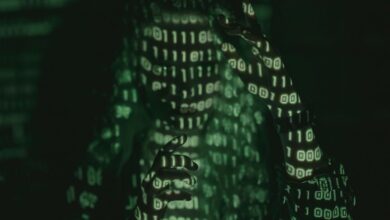Can Laturedrianeuro Spread? Exploring This Medical Condition

Laturedrianeuro presents a complex challenge in understanding its potential spread. Characterized by unusual neural signal transmission, this condition raises important questions about how it may be transmitted between individuals. Current theories suggest various methods, including direct contact and airborne routes. As research progresses, the implications for patient management and public health become increasingly significant. The ongoing investigation into its contagiousness may reveal critical insights that warrant further examination.
Understanding Laturedrianeuro: Definition and Overview
Laturedrianeuro refers to a complex neurological phenomenon characterized by the atypical spread of neural signals across various brain regions.
This condition challenges conventional understandings of neural communication, necessitating a thorough medical overview.
The laturedrianeuro definition highlights its potential implications for cognitive function and neurological health, urging further exploration into its mechanisms, effects, and possible interventions to enhance individual autonomy and well-being.
Symptoms of Laturedrianeuro
While the specific symptoms of laturedrianeuro can vary significantly among individuals, common manifestations include cognitive disturbances, altered sensory perceptions, and disruptions in motor functions.
Effective symptom recognition is crucial for timely intervention. Patient experiences often highlight the unpredictability of these symptoms, which can impact daily life and overall well-being.
Understanding these aspects is essential for managing the condition and supporting those affected.
Potential Transmission Methods
Understanding the symptoms of laturedrianeuro provides insight into the complexities of the condition, but knowledge of its potential transmission methods is equally important. Identifying possible transmission routes is crucial for effective infection control and prevention strategies.
| Transmission Route | Mode of Spread | Infection Control Measures |
|---|---|---|
| Direct contact | Person-to-person | Hand hygiene |
| Airborne | Respiratory droplets | Mask usage |
| Fomites | Surface contact | Regular disinfection |
| Vector-borne | Insect bites | Insect repellents |
Current Research on Contagiousness
Current research on the contagiousness of Laturedrianeuro focuses on various transmission mechanisms and identifies key risk factors associated with its spread.
Recent studies have yielded significant findings that contribute to the understanding of how the condition is propagated among populations.
These insights aim to inform public health strategies and mitigate transmission risks effectively.
Transmission Mechanisms Explored
As researchers delve deeper into the transmission mechanisms of Laturedrianeuro, a clearer picture of its contagiousness emerges.
Current studies emphasize the role of viral interactions in facilitating spread among hosts.
Additionally, understanding the host response is critical, as variations in immune reactions can influence susceptibility and transmission dynamics.
These insights pave the way for developing effective prevention strategies against this intriguing condition.
Risk Factors Identified
While various factors contribute to the contagiousness of Laturedrianeuro, recent research has identified specific risk elements that significantly impact transmission rates.
Genetic predisposition plays a crucial role in susceptibility, with certain individuals being more vulnerable.
Additionally, environmental triggers, such as exposure to pathogens or stressors, can further enhance the likelihood of spreading the condition, highlighting the intricate interplay between genetics and surroundings.
Current Study Findings
Recent studies have revealed significant insights into the contagiousness of Laturedrianeuro, highlighting both biological and environmental factors that influence transmission.
Researchers identified treatment options that may mitigate spread, yet diagnostic challenges persist in recognizing early symptoms.
Understanding these dynamics is crucial for effective management and prevention, emphasizing the need for ongoing investigation into the disease’s behavior and its implications for public health.
Implications for Patients and Healthcare Providers
Understanding the implications of Laturedrianeuro spread is crucial for both patients and healthcare providers, as it influences treatment strategies and patient outcomes.
Effective patient education is essential to empower individuals in managing their condition.
Additionally, healthcare protocols must adapt to incorporate the latest findings, ensuring that providers are equipped with the knowledge to deliver optimal care while addressing the complexities of Laturedrianeuro spread.
Future Directions in Laturedrianeuro Research
As researchers continue to investigate Laturedrianeuro spread, several promising avenues for future study have emerged.
Upcoming clinical trials aim to evaluate innovative therapies that may mitigate symptoms or halt progression.
Additionally, interdisciplinary collaborations are essential for understanding the underlying mechanisms of Laturedrianeuro, potentially leading to breakthroughs in treatment strategies.
Such efforts could significantly enhance patient care and outcomes in affected populations.
Conclusion
In summary, while the transmissibility of Laturedrianeuro remains under investigation, understanding its potential spread is crucial for patient care and public health. As the adage goes, “An ounce of prevention is worth a pound of cure.” By fostering awareness and implementing effective infection control measures, both patients and healthcare providers can better navigate this complex condition. Continued research will be essential to unravel the mysteries of Laturedrianeuro and improve management strategies for those affected.




